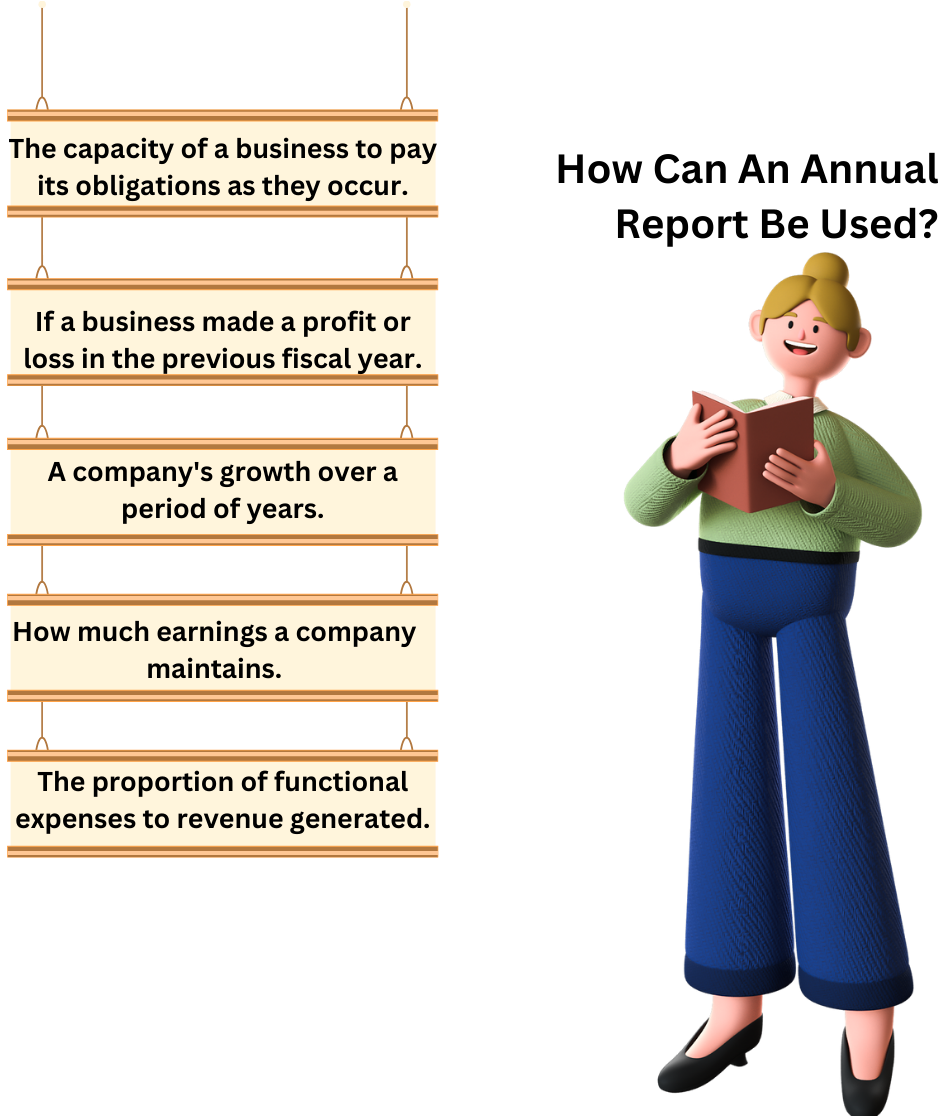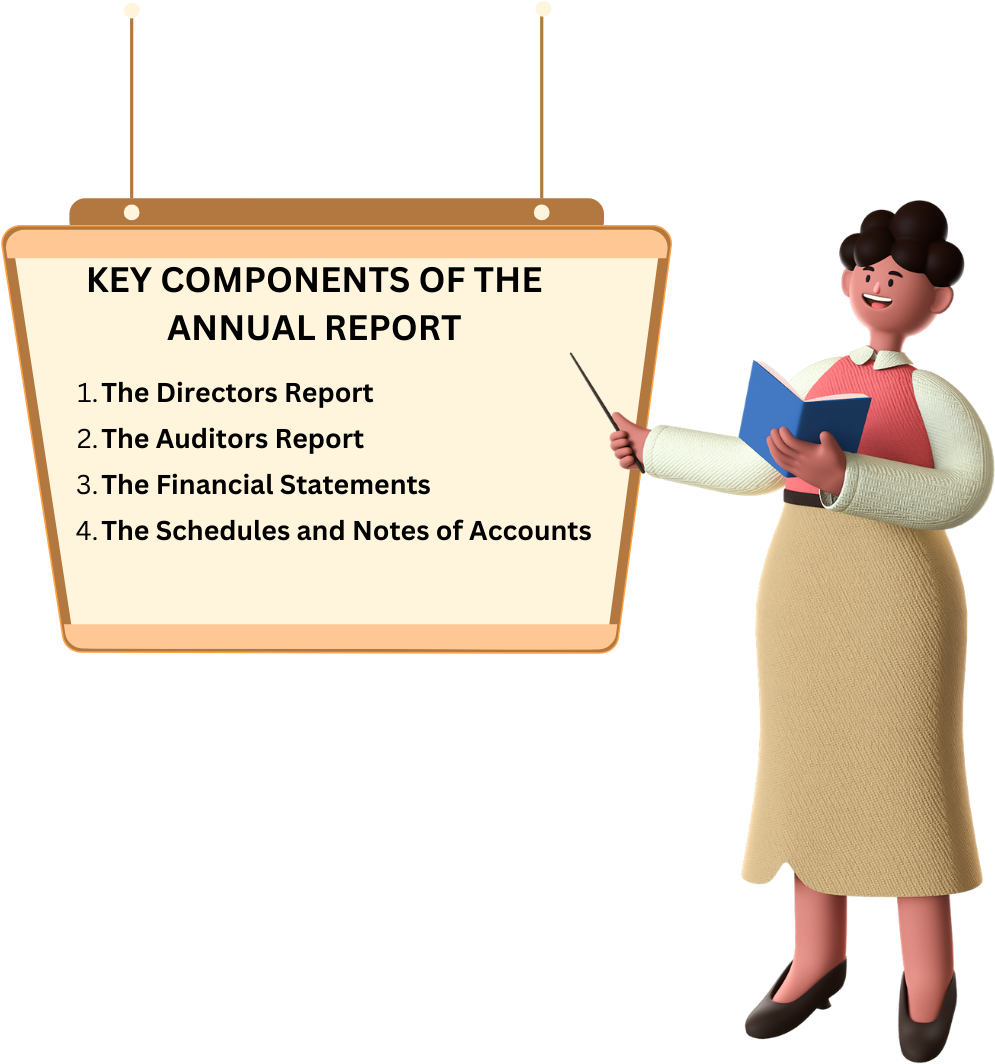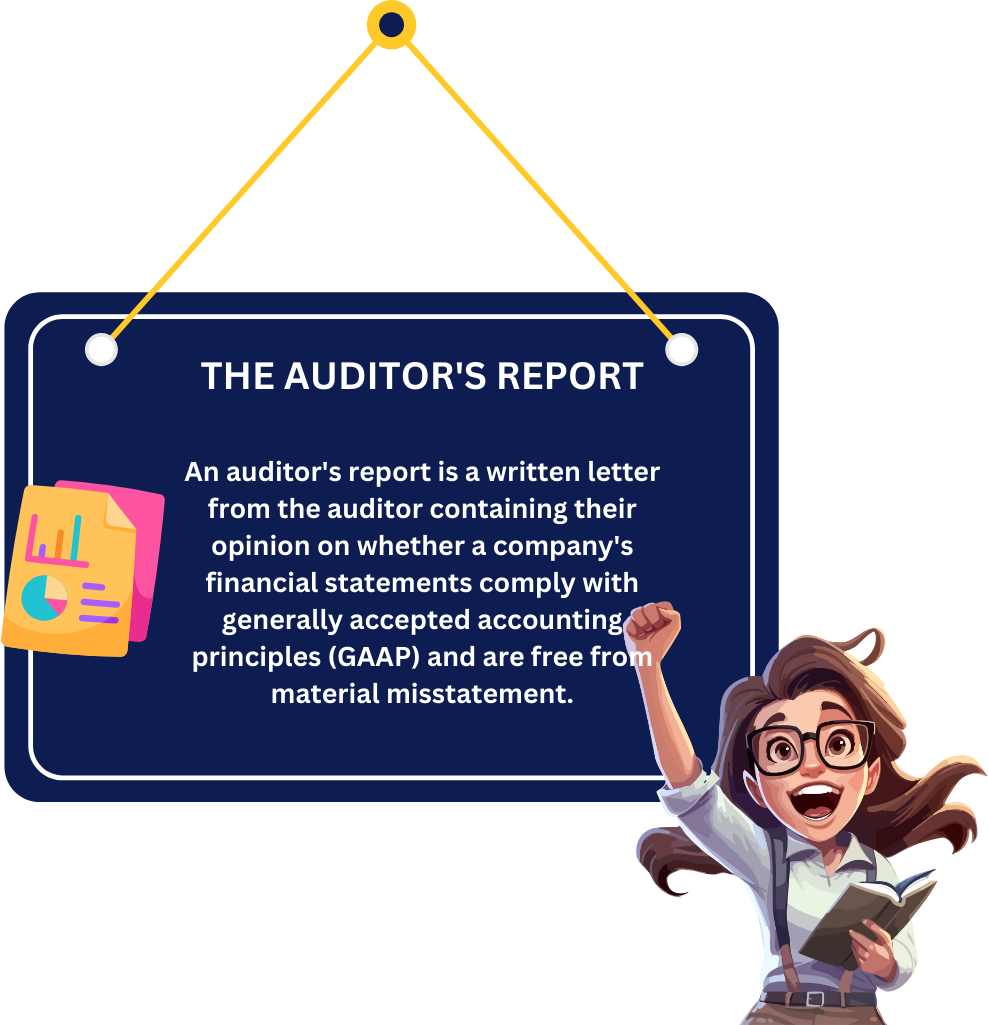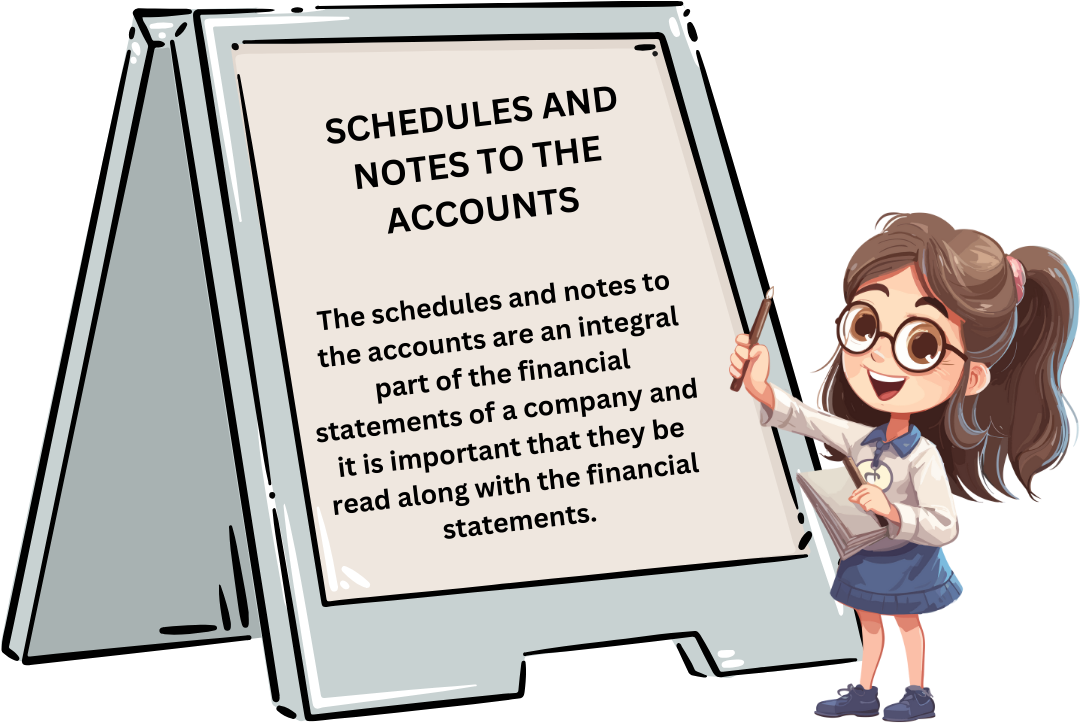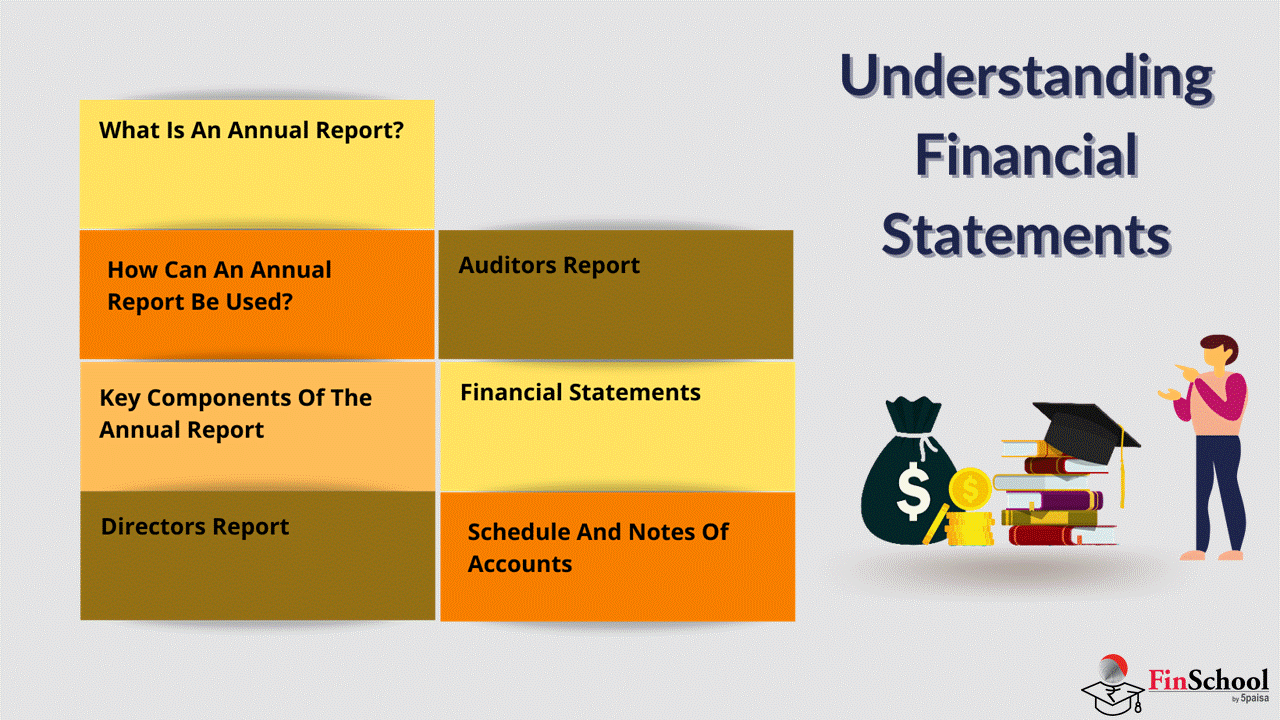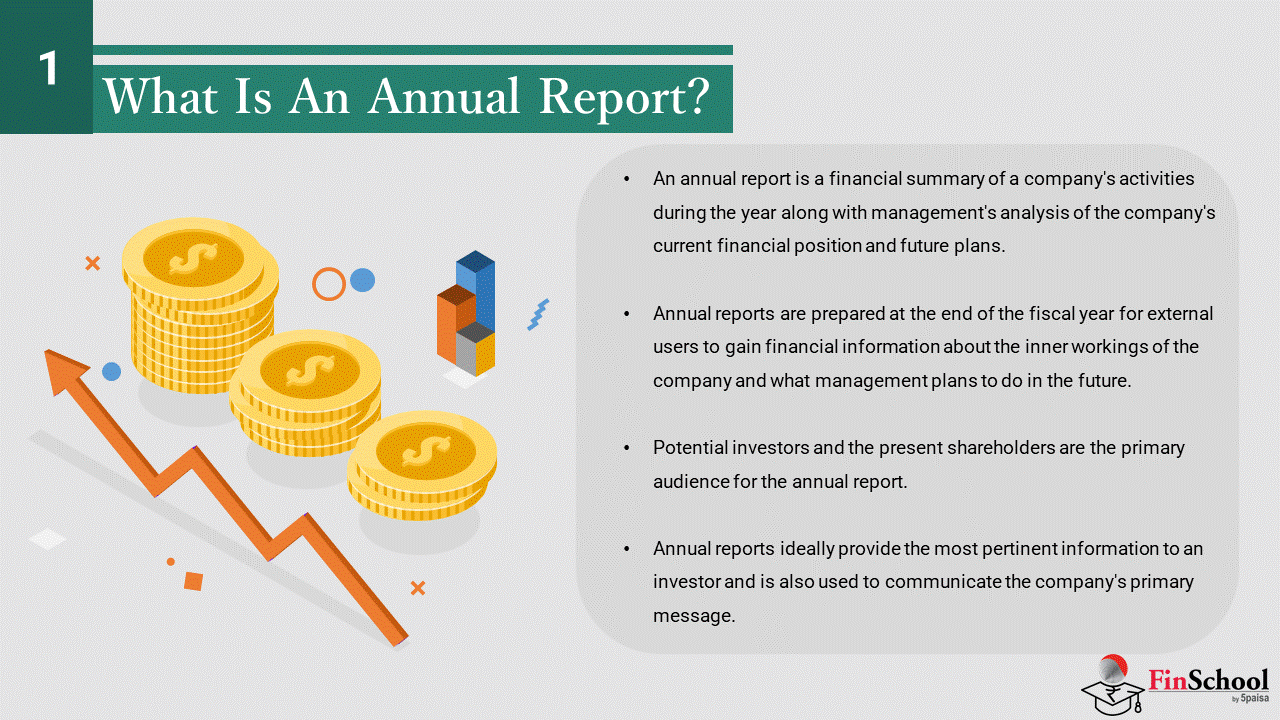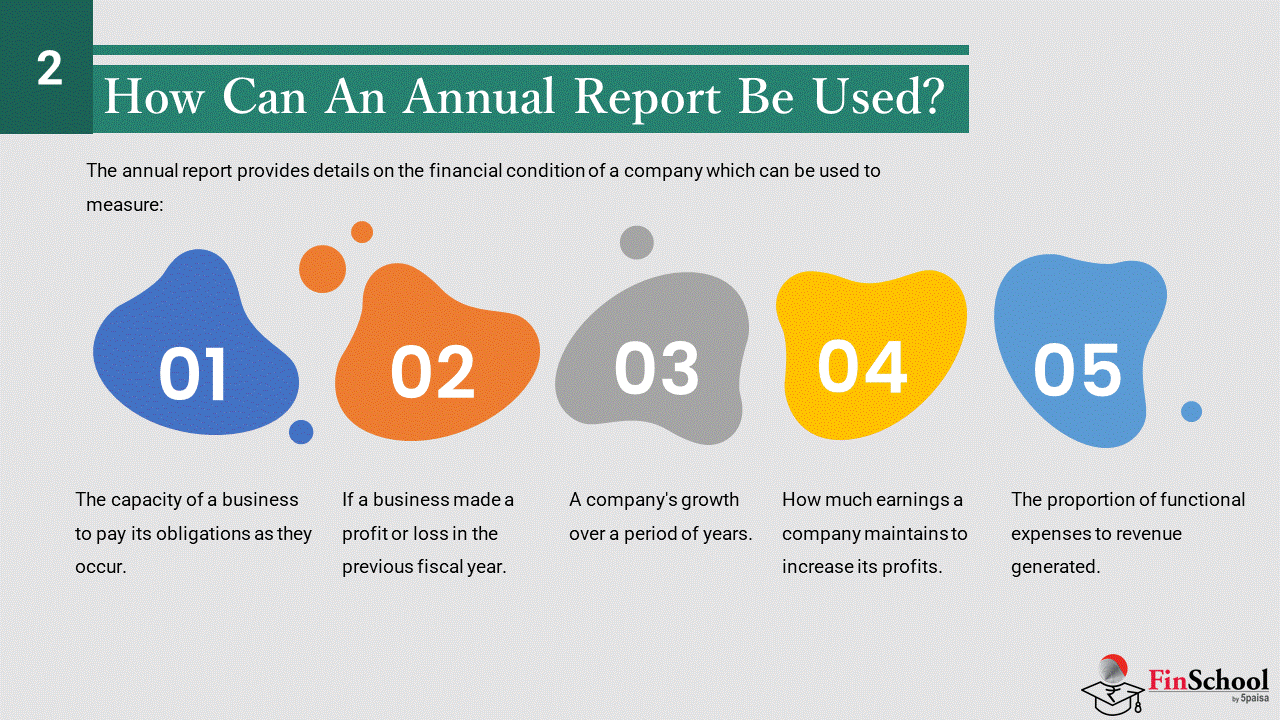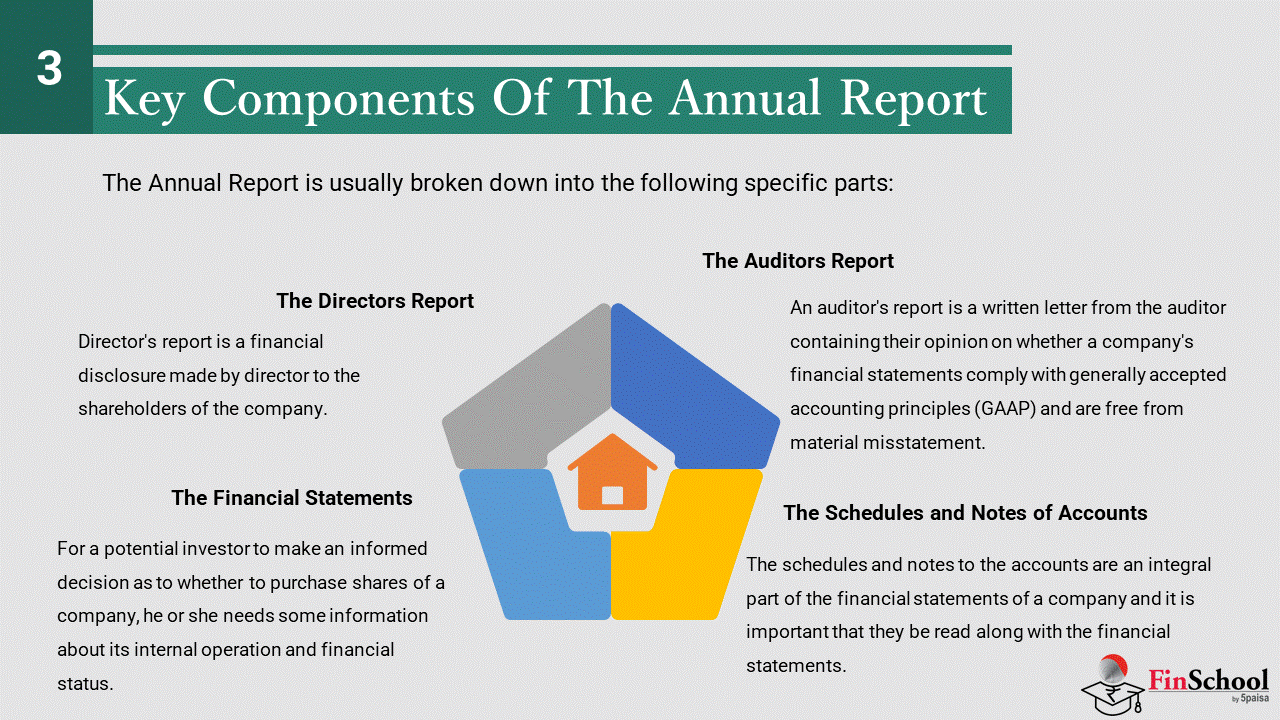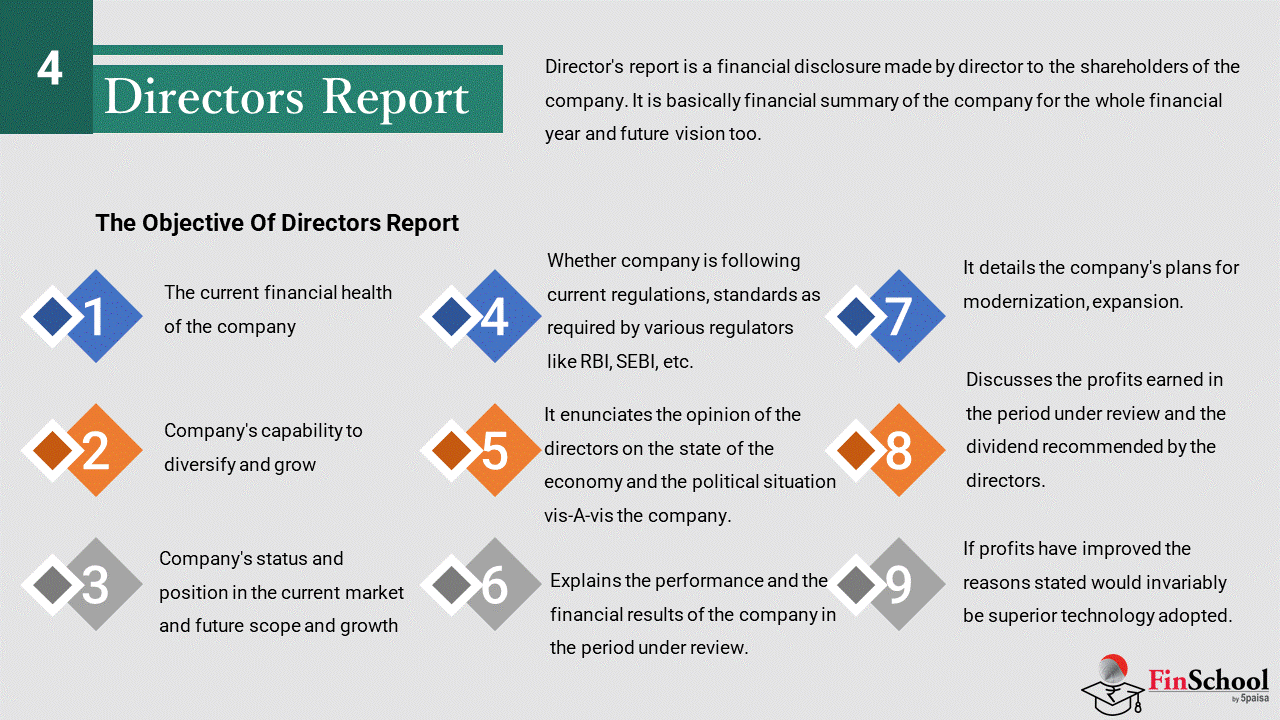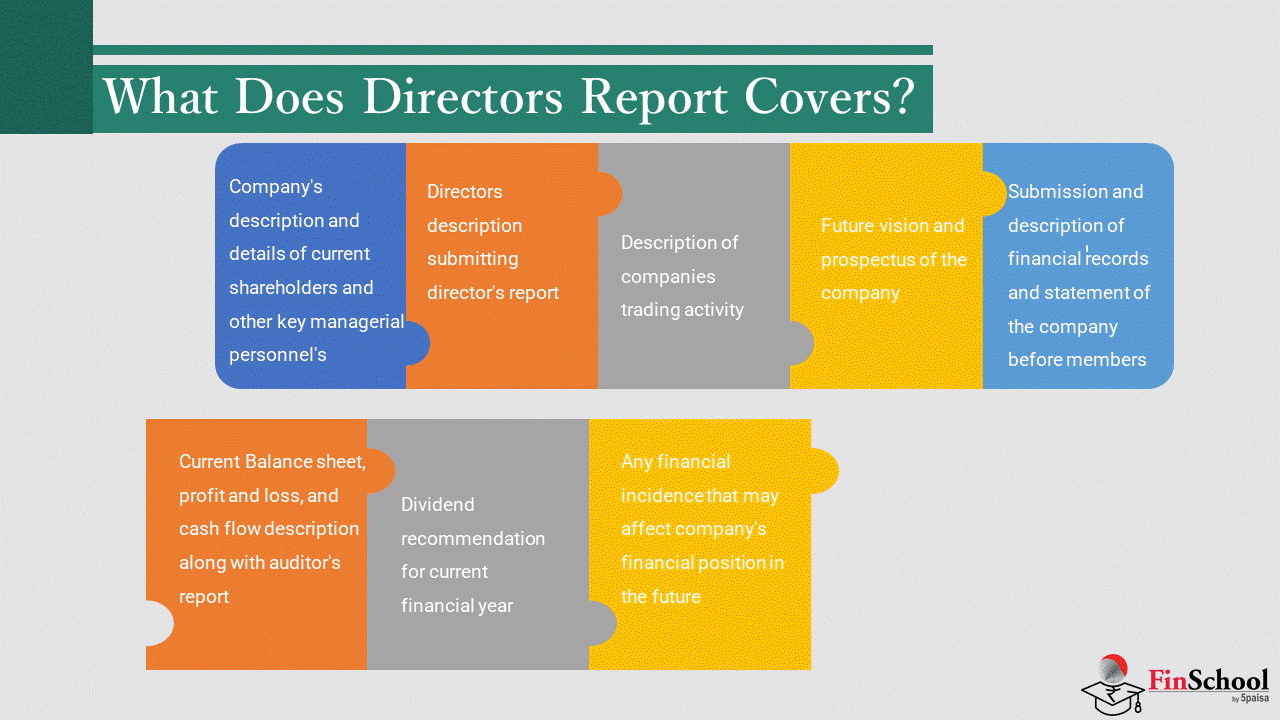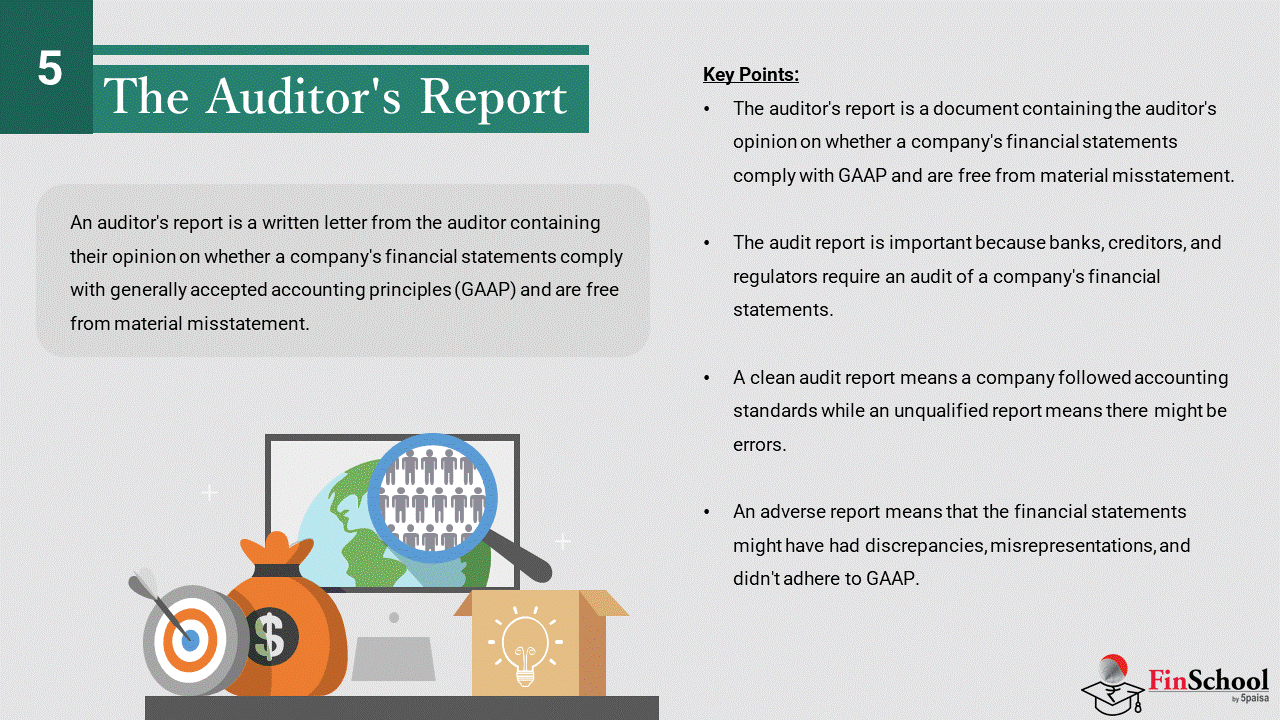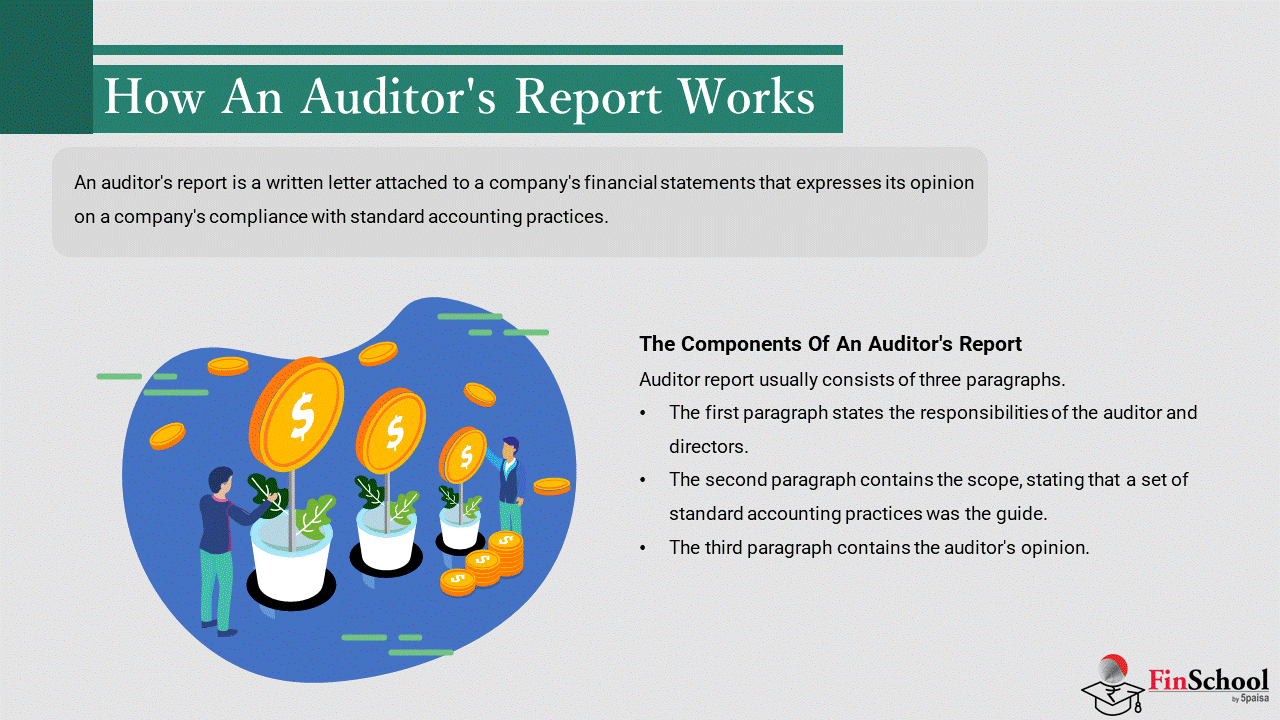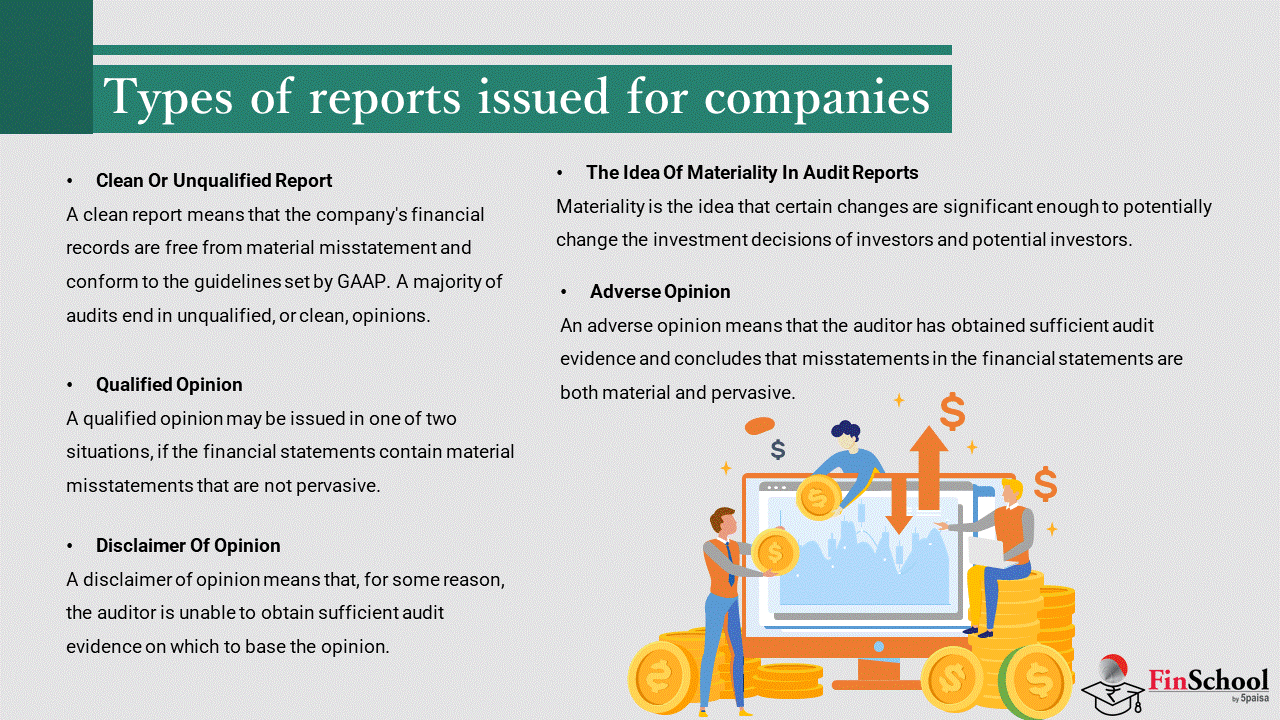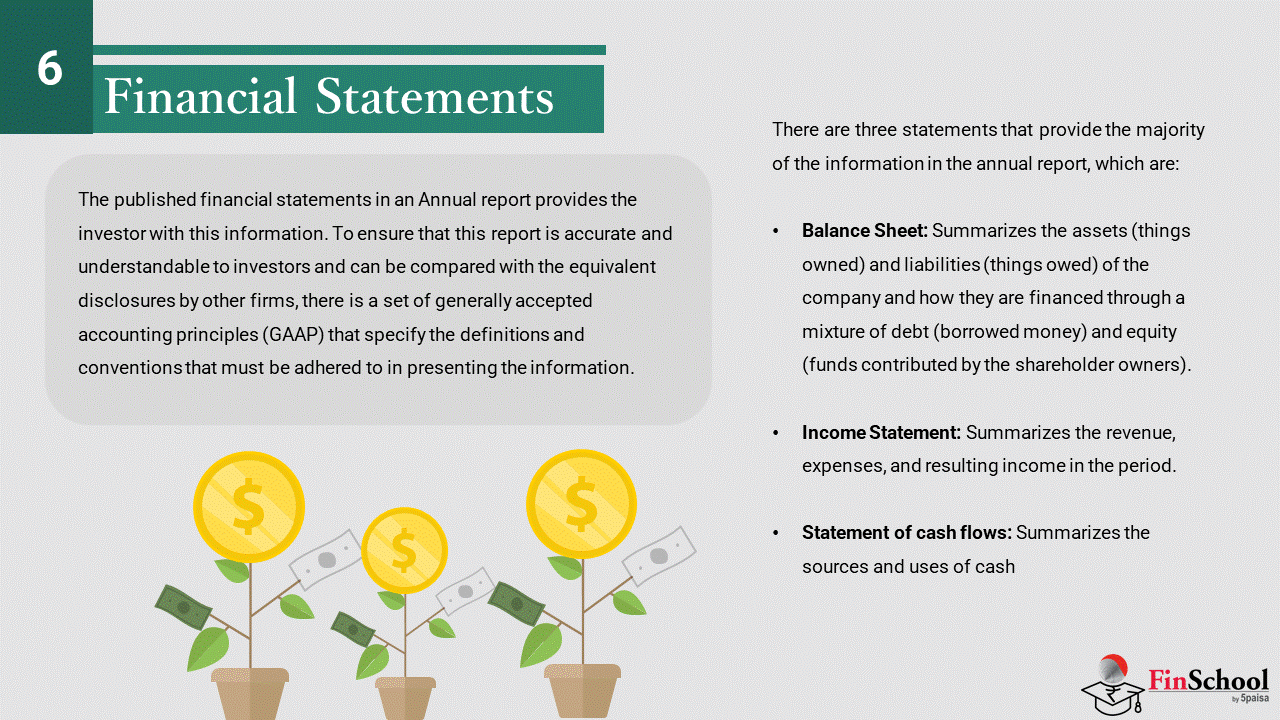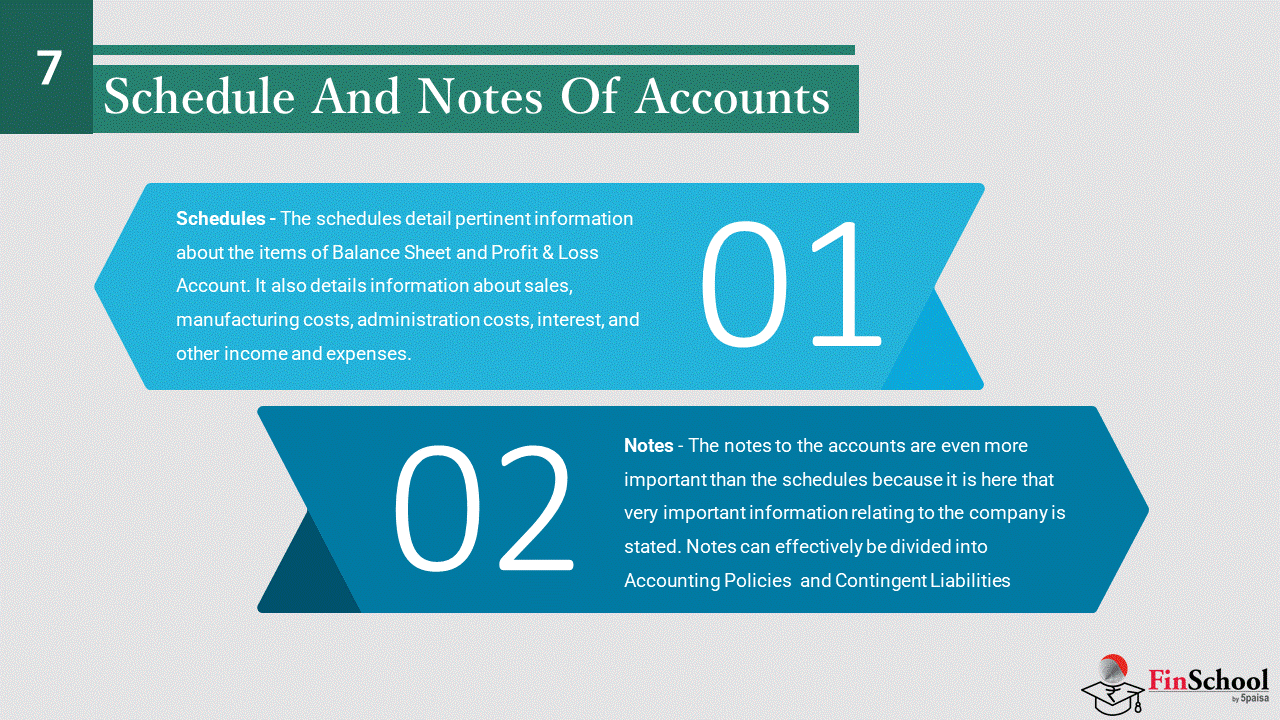- Introduction to Fundamental Analysis
- Know Steps & Economic Analysis In Fundamental Analysis
- Understanding Basic Terms In Fundamental Analysis
- Understanding Financial Statements in Stock Market
- Understanding Stock Balance Sheet in Stock Market
- Understanding Income Statements in Stock Market
- Understanding Financial Ratios for Stock Analysis
- Understanding Liquidity Ratio in Stock Market
- Understanding Activity Ratio in Stock Markets
- Understanding Risk/Leverage Ratios In Stock Market
- Understanding Profitability Ratios in Stock Market
- Understanding Valuation Ratios in Stock Market
- Study
- Slides
- Videos
4.1 What is an Annual Report?
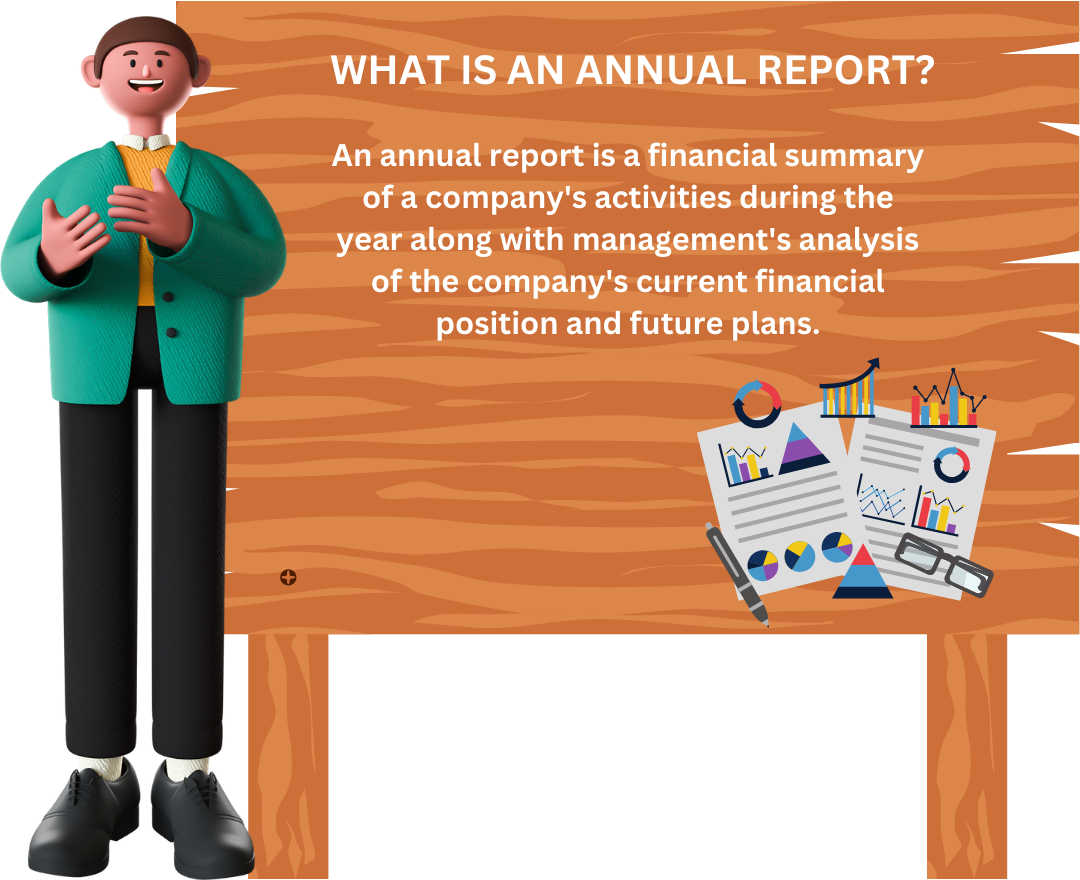
- An annual report is a financial summary of a company’s activities during the year along with management’s analysis of the company’s current financial position and future plans. Annual reports are prepared at the end of the fiscal year for external users to gain financial information about the inner workings of the company and what management plans to do in the future.
- Potential investors and the present shareholders are the primary audience for the annual report. Annual reports ideally provide the most pertinent information to an investor and is also used to communicate the company’s primary message. For an investor, the annual report must be the default option to seek information about a company. Of course there are many media websites claiming to give the financial information about the company; however the investors should avoid seeking information from such sources. Remember the information is more reliable if we get it get it directly from the annual report.
4.2 How Can an Annual Report Be Used?
The annual report provides details on the financial condition of a company which can be used to measure:
-
The capacity of a business to pay its obligations as they occur.
-
If a business made a profit or loss in the previous fiscal year.
-
A company’s growth over a period of years.
-
How much earnings a company maintains to increase its profits.
-
The proportion of functional expenses to revenue generated.
4.3 Key Components of the Annual Report
The Annual Report is usually broken down into the following specific parts:
- The Directors Report
- The Auditors Report
- The Financial Statements
- The Schedules and Notes of Accounts
4.4 Directors Report
The Director’s Report
- Director’s report is a financial disclosure made by director to the shareholders of the company. It is envisaged to disclose financial status of the company by disclosing company’s affairs and scope of work along with its subsidiaries. It is basically financial summary of the company for the whole financial year and future vision too.
The Objective Of Directors Report
A director of the company needs to prepare and submit a said report to shareholders of the company at every annual general meeting every year in order to maintain transparency in the company. It helps stakeholders of the company understand the current financial status of the company and future scope and understand:
-
The current financial health of the company
-
Company’s capability to diversify and grow
-
Company’s status and position in the current market and future scope and growth
-
Whether company is following current regulations, standards, and social responsibility as required by various regulators like ROC, RBI, SEBI, etc.
-
It enunciates the opinion of the directors on the state of the economy and the political situation vis-A-vis the company.
-
Explains the performance and the financial results of the company in the period under review. This is an extremely important part. The results and operations of the various separate divisions are usually detailed and investors can determine the reasons for their good or bad performance.
-
The Director’s Report details the company’s plans for modernization, expansion and Without these, a company will remain static and eventually decline.
-
Discusses the profits earned in the period under review and the dividend recommended by the directors. This paragraph should normally be read with sane scepticism as the directors will always argue that the performance was satisfactory.
-
If profits have improved the reasons stated would invariably be superior technology adopted, intense marketing and hard work in the face of severe competition etc. If profits are low, adverse economic conditions are usually blamed for the same.
Elaborates on the directors views of the company’s prospects for the future.
Discusses plans for new acquisitions and investments.
An investor must intelligently evaluate the issues raised in a Director’s Report. If the report talks about diversification, one must the question that though diversification is a good strategy, does it make sense for the company? Industry conditions, the management’s knowledge of the new business must be considered. Although companies must diversify in order to spread the risks of economic slumps, every diversification may not suit a company.
Similarly, all other issues raised in the Director’s Report should be analysed.
-
Did the company perform as well as others in the same industry?
-
Is the finance being raised the most logical and beneficial to the company?
It is imperative that the investor read between the lines of the Director’s Report and find the answers to these and many other questions. In short, a Director’s Report is valuable and if read intelligently can give the investor a good grasp of the workings of a company, the problems it faces, the direction it intends taking and its future prospects.
What Does Directors Report Covers?
-
Company’s description and details of current shareholders and other key managerial personnel’s
-
Directors description submitting director’s report
-
Description of companies trading activity
-
Future vision and prospectus of the company
-
Submission and description of financial records and statement of the company before members
-
Current Balance sheet, profit and loss, and cash flow description along with auditor’s report
-
Dividend recommendation for current financial year
-
Any financial incidence that may affect company’s financial position in the future
Is It Mandatory To Submit Director’s Report?
- A director of the company is liable to submit director report every financial year before shareholders of the company. Companies act, 2013 has made it mandatory to file this report as per many sections embedded in the act whereas, in the erstwhile act, only section 217 talked about director’s report.
4.5 Auditors Report
The Auditor’s Report
An auditor’s report is a written letter from the auditor containing their opinion on whether a company’s financial statements comply with generally accepted accounting principles (GAAP) and are free from material misstatement. The independent and external audit report is typically published with the company’s annual report. The auditor’s report is important because banks and creditors require an audit of a company’s financial statements before lending to them.
Key Points:
-
The auditor’s report is a document containing the auditor’s opinion on whether a company’s financial statements comply with GAAP and are free from material misstatement.
-
The audit report is important because banks, creditors, and regulators require an audit of a company’s financial statements.
-
A clean audit report means a company followed accounting standards while an unqualified report means there might be errors.
-
An adverse report means that the financial statements might have had discrepancies, misrepresentations, and didn’t adhere to GAAP.
How An Auditor’s Report Works
An auditor’s report is a written letter attached to a company’s financial statements that expresses its opinion on a company’s compliance with standard accounting practices. The auditor’s report is required to be filed with a public company’s financial statements when reporting earnings to the Stock exchange
However, an auditor’s report is not an evaluation of whether a company is a good investment. Also, the audit report is not an analysis of the company’s earnings performance for the period. Instead, the report is merely a measure of the reliability of the financial statements.
The Components Of An Auditor’s Report
Auditor report usually consists of three paragraphs.
-
The first paragraph states the responsibilities of the auditor and directors.
-
The second paragraph contains the scope, stating that a set of standard accounting practices was the guide.
-
The third paragraph contains the auditor’s opinion.
An additional paragraph may inform the investor of the results of a separate audit on another function of the entity. The investor will key in on the third paragraph, where the opinion is stated.
The type of report issued will be dependent on the findings by the auditor. Below are the most common types of reports issued for companies.
Clean Or Unqualified Report
A clean report means that the company’s financial records are free from material misstatement and conform to the guidelines set by GAAP. A majority of audits end in unqualified, or clean, opinions.
Qualified Opinion
A qualified opinion may be issued in one of two situations: first, if the financial statements contain material misstatements that are not pervasive; or second, if the auditor is unable to obtain sufficient appropriate audit evidence on which to base an opinion, but the possible effects of any material misstatements are not pervasive. For example, a mistake might have been made in calculating operating expenses or profit. Auditors typically state the specific reasons and areas where the issues are present so that the company can fix them.
Adverse Opinion
An adverse opinion means that the auditor has obtained sufficient audit evidence and concludes that misstatements in the financial statements are both material and pervasive. An adverse opinion is the worst possible outcome for a company and can have a lasting impact and legal ramifications if not corrected. Regulators and investors will reject a company’s financial statements following an adverse opinion from an auditor. Also, if illegal activity exists, corporate officers might face criminal charges.
Disclaimer Of Opinion
A disclaimer of opinion means that, for some reason, the auditor is unable to obtain sufficient audit evidence on which to base the opinion, and the possible effects on the financial statements of undetected misstatements, if any, could be both material and pervasive. Examples can include when an auditor can’t be impartial or wasn’t allowed access to certain financial information.
The Idea Of Materiality In Audit Reports
Materiality is the idea that certain changes are significant enough to potentially change the investment decisions of investors and potential investors. it means that issues that only deal with a small portion, i.e., 1% of net income, are not material. Auditors are primarily concerned with material misstatements, which include omissions or other errors that individually or in the aggregate would reasonably be expected to influence the economic decisions of users. Materiality is pivotal in the course of an audit and affects what type of report the auditor will issue.
4.6 Financial Statements
Financial Statements
For a potential investor to make an informed decision as to whether to purchase shares of a company, he or she needs some information about its internal operation and financial status. What does the company own? What does it owe to others? How much money is it making? How is it using that money? The published financial statements in an Annual report provides the investor with this information. To ensure that this report is accurate and understandable to investors and can be compared with the equivalent disclosures by other firms, there is a set of generally accepted accounting principles (GAAP) that specify the definitions and conventions that must be adhered to in presenting the information.
There are three statements that provide the majority of the information in the annual report, which are:
-
Balance sheet: Summarizes the assets (things owned) and liabilities (things owed) of the company and how they are financed through a mixture of debt (borrowed money) and equity (funds contributed by the shareholder owners).
-
Income statement: Summarizes the revenue, expenses, and resulting income in the period.
-
Statement of cash flows: Summarizes the sources and uses of cash
We will understand each of these statements in detail over the next few chapters. However at this stage it is important to understand that the financial statements come in two forms.
-
Standalone financial statement or simply standalone numbers and
-
Consolidated financial statement or simply consolidated numbers
To understand the difference between standalone and consolidated numbers, we need to understand the structure of a company. Typically, a well established company has many subsidiaries. These companies also act as a holding company for several other well established companies.
Standalone Financial statements represent the standalone numbers/ financials of the company itself and do not include the financials of its subsidiaries. However the consolidated numbers includes the companies (i.e. standalone financials) and its subsidiaries financial statements.
4.7 Schedule And Notes Of Accounts
Schedules And Notes To The Accounts
The schedules and notes to the accounts are an integral part of the financial statements of a company and it is important that they be read along with the financial statements.
Schedules – The schedules detail pertinent information about the items of Balance Sheet and Profit & Loss Account. It also details information about sales, manufacturing costs, administration costs, interest, and other income and expenses. This information is vital for the analysis of financial statements. The schedules enable an investor to determine which expenses increased and seek the reasons for this. Similarly, investors would be able to find out the reasons for the increase or decrease in sales and the products that are sales leaders. The schedules even give details of stocks and sales, particulars of capacity and productions, and much other useful information.
Notes – The notes to the accounts are even more important than the schedules because it is here that very important information relating to the company is stated. Notes can effectively be divided into:
Accounting Policies – All companies follow certain accounting principles and these may differ from those of other entities. As a consequence, the profit earned might differ. Companies have also been known to change (normally increase) their profit by changing the accounting policies. The accounting policies normally detailed in the notes relate to:
-
How sales are accounted for?
-
What the research and development costs are?
-
How the gratuity liability is expensed?
-
How fixed assets are valued?
-
How depreciation is calculated?
-
How stock, including finished goods, work in progress, raw materials and consumable goods are valued?
-
How investments are stated in the balance sheet?
-
How has the foreign exchange translated?
Contingent Liabilities – Contingent liabilities are liabilities that may arise up on the happening of an event. It is uncertain however whether the event itself may happen. This is why these are not provided for and shown as an actual liability in the balance sheet. Contingent liabilities are detailed in the Financial Statements as a note to inform the readers of possible future liabilities while arriving at an opinion about the company. The contingent liabilities one normally encounters are:
-
Bills discounted with banks – These may crystallize into active liabilities if the bills are dishonoured.
-
Gratuity to employees not provided for
-
Claims against a company not acknowledged or accepted
-
Excise claims against the company etc.
Others – It must be appreciated that the purpose of notes to the accounts is to inform the reader more fully. Consequently, they detail all pertinent factors which affect, or will affect, the company and its results. Often as a consequence, adjustments may need to be made to the accounts to unearth the true results. The more common notes one comes across are:
-
Whether provisions for known or likely losses have been made.
-
Estimated value of contracts outstanding.
-
Interest not provided for.
-
Arrangements agreed by the company with third parties.
-
Agreement with labour.
The importance of these notes cannot be overstressed. It is imperative that investors read these carefully.


